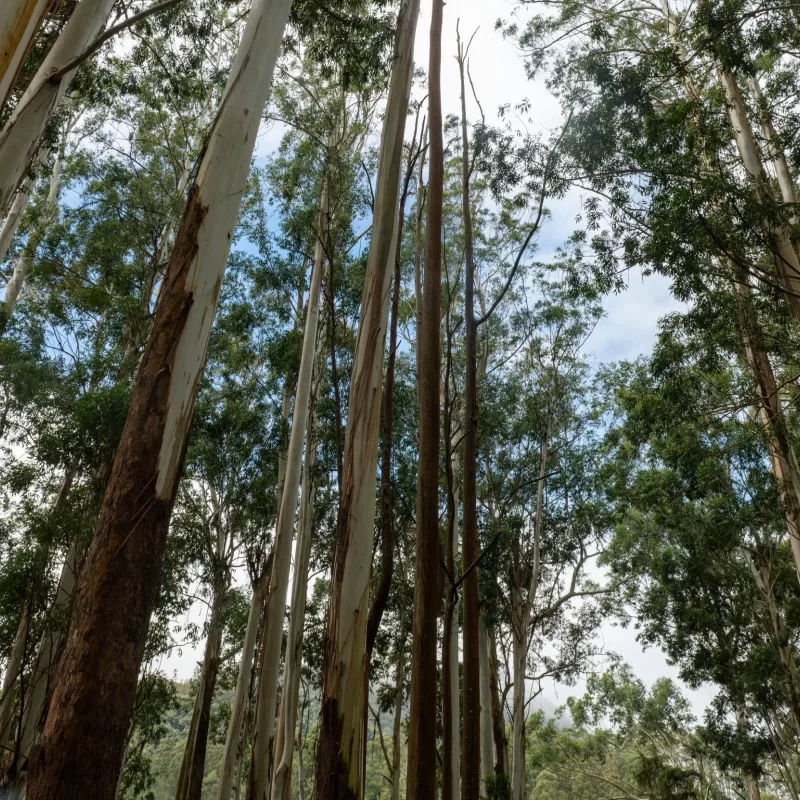| Height |
15.0m - 90.0m (1500-9000cm) |
| Flowers |
Umbels with 7-16 flowers, profuse, white-cream/ |
| Fruit |
Woody capsule |
| Form |
Tall straight tree with a dense crown. |
| Municipalities |
Break O'Day; Brighton; Burnie; Central Coast; Central Highlands; Circular Head; Clarence; Derwent Valley; Devonport; Dorset; Flinders Island; Georgetown; Glamorgan-Spring Bay; Glenorchy; Hobart; Huon Valley; Kentish; Kingborough; Latrobe; Launceston; Meander Valley; Northern Midlands; Sorell; Southern Midlands; Tasman; Waratah-Wynyard; West Coast; West Tamar |
| Communities |
Dry Eucalypt Forest and Woodland; Wet Eucalypt Forest |
| Habitat Notes |
Grows on deep soils with good drainage from sea level to c.600m. Is absent from poorly drained sites, dry sites and highly infertile soils.Generally frost and drought resistant, but this is strongly related to provenance. |
| Site Tolerance |
Dry; Exposed; Moist; Rocky; Windy |
| Soil Tolerance |
Clay; Fertile; Loam; Poor; Sandy; Well-drained |
| General Notes |
One of the most important hardwoods; used for pulp production and for a wide range of construction and manufacturing purposes. Useful in providing high-level shelter (up to 50m) in windbreaks. Its dense foliage provides useful shade. Suitable for planting for the commercial production of sawlogs. Also a possible hardwood pulp species. Large quantities of cream-coloured pollen is yielded producing a mild flavoured honey. Nectar feeding birds are attracted to the blossom and rosellas are attracted to the capsules and seed. The blossom provides food (pollen) for many native insects, which in turn attract insect-eating birds. The seed and fruit are eaten by some native birds. The leaves are used for dyes.Koori (mainland) use: Fibre from inner bark used to make coarse string for bags and fishing nets. Outer bark for tinder. Not suitable below powerlines. |


